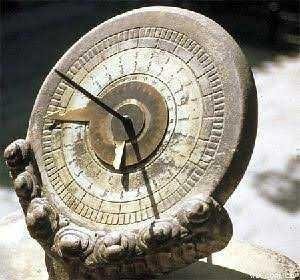
The following explanation may be the knowledge for us about how human origins use clocks to measure time. Predictional imperatives like today may be people who have forgotten who first thought of the importance of tools for measuring time.
This clock was created by a Muslim Astronomer named Ibn al-Shatir about 3,500 years before Christ. This clock shows the time based on the location of the sun, by way of utilizing the shadow that hit the flat surface. Ibn al-Shatir divides the time in a day by 12 hours, in the short winter time, while in the summer time is longer. About 5,000-6,000 years ago, Egyptians measured time and made calendars using obelisks.The most sophisticated water clocks were first discovered in the glory days of Islam made by Al-Jaziri in 1136-1206 in the form of elephants and can produce sounds in every hour. The greatest astronomical clock made by Al-Jazari.
is called Castle Clock, which is considered to be the first programmed analogue computer. In the Islamic world, Al-Jazari is not the only scientist who created the clock. Many other scientists have also recorded some types of clocks. However, the discovery of the most famous water clock is that of Al-Jazari.
British society began to make watches in 1580. And around 1525 Peter Henlein, a locksmith from Nurnberg, Germany introduced home clocks with diameters 10-12.5 cm and a thickness of 7.5 cm. At the end of the 16th century, bells began to be erect and at the beginning of the 17th century the engine began to be wrapped in brass, enriched by glass cover and minute pointer. Not only that, starting in 1656 also introduced bells with ballast and short-stringed pendulum wrapped in a wooden box and can be hung on the wall. In 1929 a quartz crystal was applied to the time / hour measuring device. The first digital / electric watch was made by The Hamilton Watch Company of Lancaster, Pennsylvania around 1950. After that, several brands and watches began to emerge to date.
@wieraby thanks
Sort: Trending